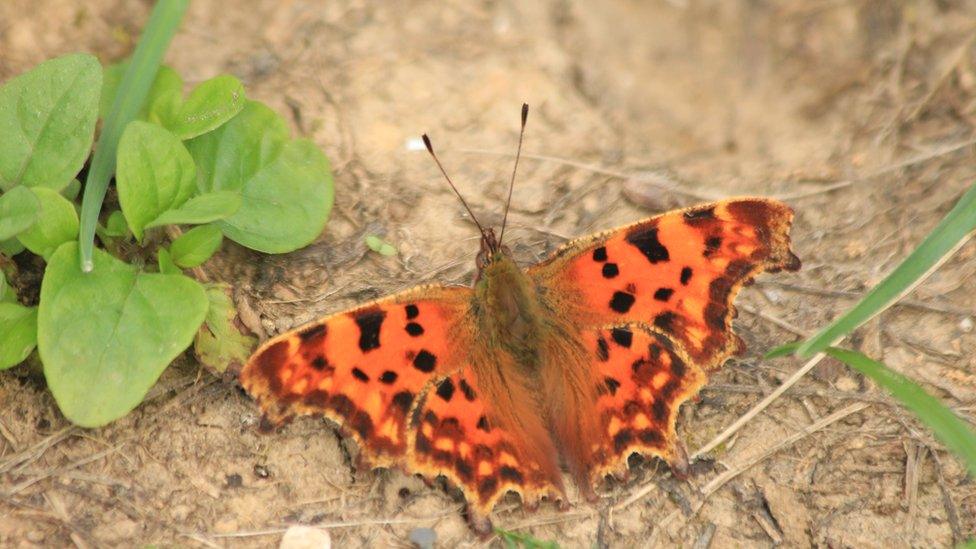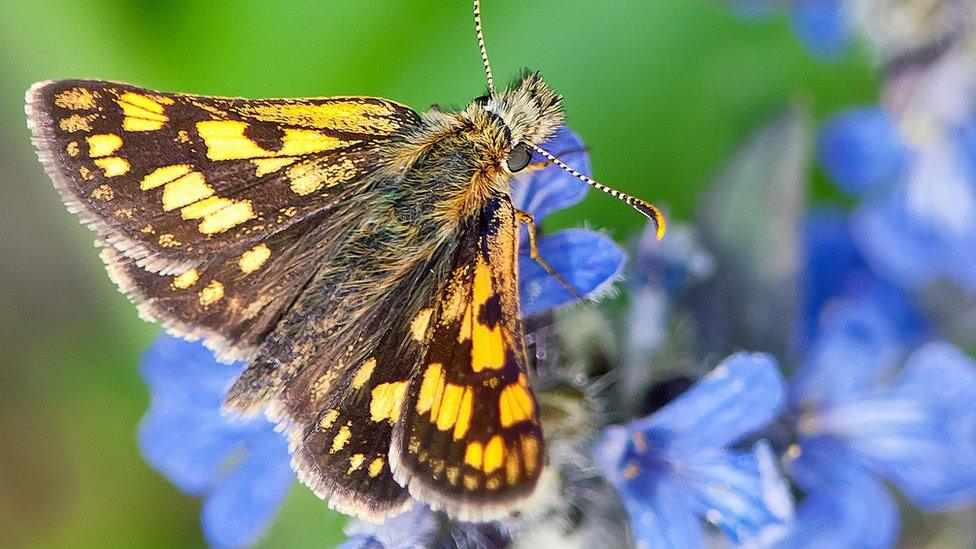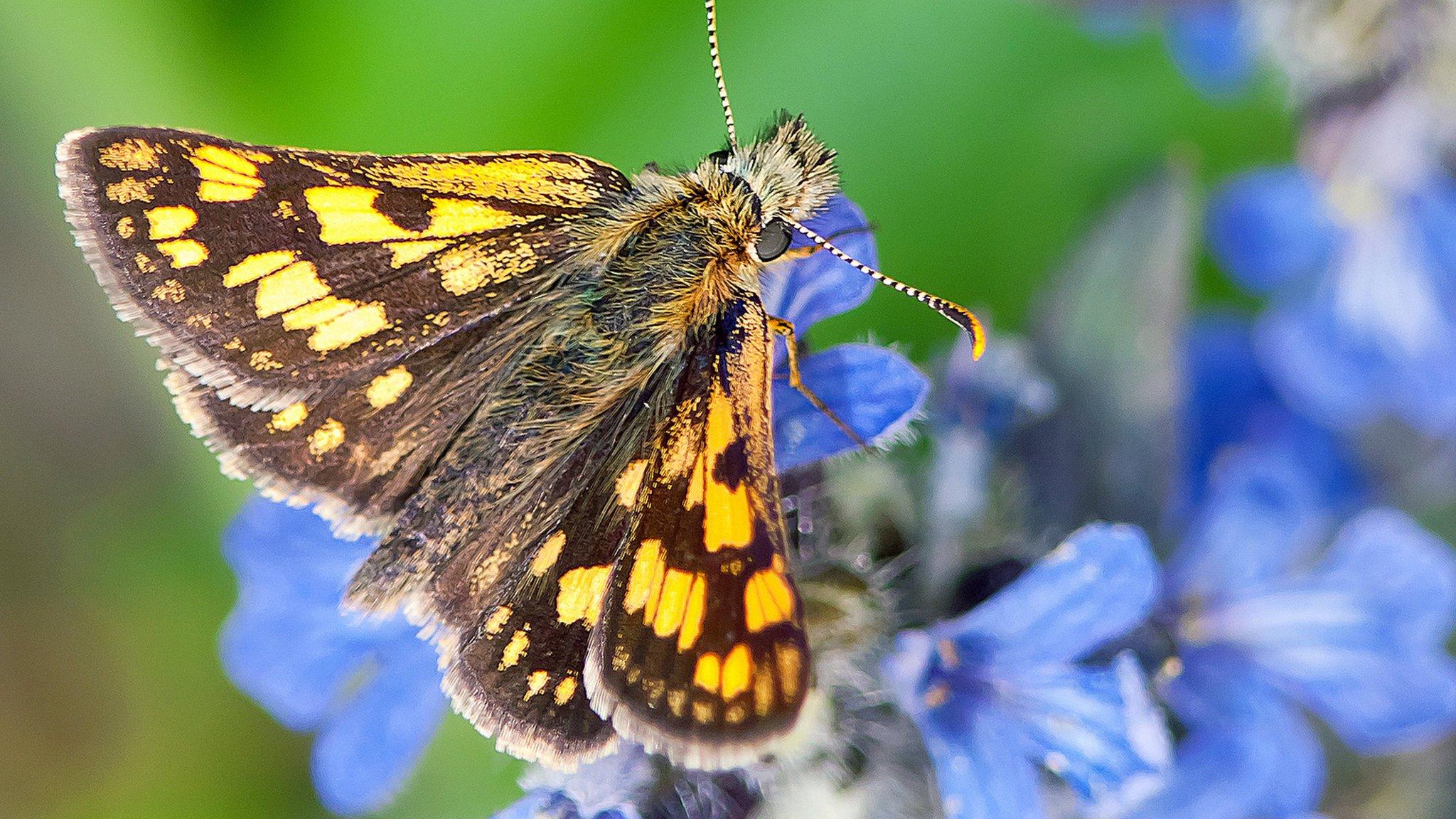Butterfly temperature research 'could boost survival chances'
- Published

A Comma butterfly pictured during the study in 2018
Thousands of wild butterflies have had their temperatures taken by researchers who hope the results could help safeguard the species' future.
A team from the University of Cambridge and a wildlife trust tested 2,000 insects in Bedfordshire.
They are investigating how effectively species can warm or cool themselves, which could help the insects cope with a warming climate.
The full results will be published this summer.
Twenty-five researchers and volunteers recorded information about more than 12,000 butterflies at four reserves owned by the Wildlife Trust for Bedfordshire, Cambridgeshire and Northamptonshire, taking the temperature of 2,073 of them.
The team looked at how much certain butterfly species can change their body temperature compared to the air temperature.

The Dingy Skipper butterfly is a species the reserves are most famous for
Dr Andrew Bladon, from the university's insect ecology group, said butterflies had well-known habits, such as basking in the sun with their wings open to warm up, but effectiveness varied between species.
"That will have consequences in how active they are able to be. On a cold day, species good at heating themselves will be active earlier - feeding, mating and defending their territory," he said.
Dr Bladon said butterflies able to regulate their body temperature relative to air temperature were less likely to be affected by climate change, allowing conservationists to predict which would be vulnerable.

Dr Andrew Bladon led the research

The team also examined micro-climates - pockets of air at a higher or lower temperature than the surrounding air - to understand how different habitats could provide ways for butterflies to warm or cool themselves.
Beneficial micro-climates could then be created and maintained in nature reserves, researchers suggest.
The chalk grassland site at Totternhoe was chosen as it is home to half the butterfly species recorded in the UK.
A Wildlife Trust spokesman said the collaborative project would "guide its future reserve management strategies".
- Published25 May 2018

- Published24 May 2018
